Metallurgical Coal Project
Grosvenor Decline Project, Australia, 8 m diameter Crossover XRE TBM
Find out now.
Is a Crossover TBM right for your project?
Read the white paper
The Latest in Crossover TBM Design
Download the spec sheet
Crossover XRE: Download the spec sheet
Download the spec sheet
Crossover XSE: Download the spec sheet
![65 Years of Innovation and Experience [default]](https://www.robbinstbm.com/wp-content/uploads/2017/04/Side-Bar-Blue-Blocks_70-Years.jpg)
Our History
A Legacy of Innovation
Insights in the Industry:
Read the Robbins Blog
Careers
Our machines change the world. Join the team that makes them.
A Solution for Every Condition: Search our Project Database
Project Map
Whether the geology of your project includes sections of hard rock, soft ground, boulders, or a little bit of everything, Robbins has a solution for you. Not all projects fit within the parameters of specific TBM types, and at Robbins we believe that your machine should be custom-engineered for your unique project requirements.
The Crossover Solution
For the most difficult projects, Robbins Crossover TBMs can offer time-saving and efficient tunneling. Whether the hybrid design converts between EPB and hard rock modes, between Slurry and hard rock, or between EPB and Slurry is up to you. From heavy duty screw conveyors that handle rock to interchangeable cutting tools, Robbins Crossover TBMs are designed to cross between ground conditions that would typically require multiple machines.
What is a Crossover TBM?
Crossover TBMs are machine designs that feature advantages from two different types of TBMs, and can “cross over” between widely varying ground types that would normally require multiple machines. They are also known as hybrid or dual mode machines in the tunneling industry. For more on the various Crossover TBMs, please click on the links below to learn more about each machine type.
Standing for a Crossover (X) between Rock (R) and EPB (E), the XRE has been designed and deployed by Robbins on multiple projects that feature sections of both hard rock and soft ground in the tunnel alignment. Using features of both EPB and Single Shield Hard Rock machines, the XRE has successfully been used on mixed ground projects in Australia, Turkey, Mexico, India, and more. Download a specification sheet here.
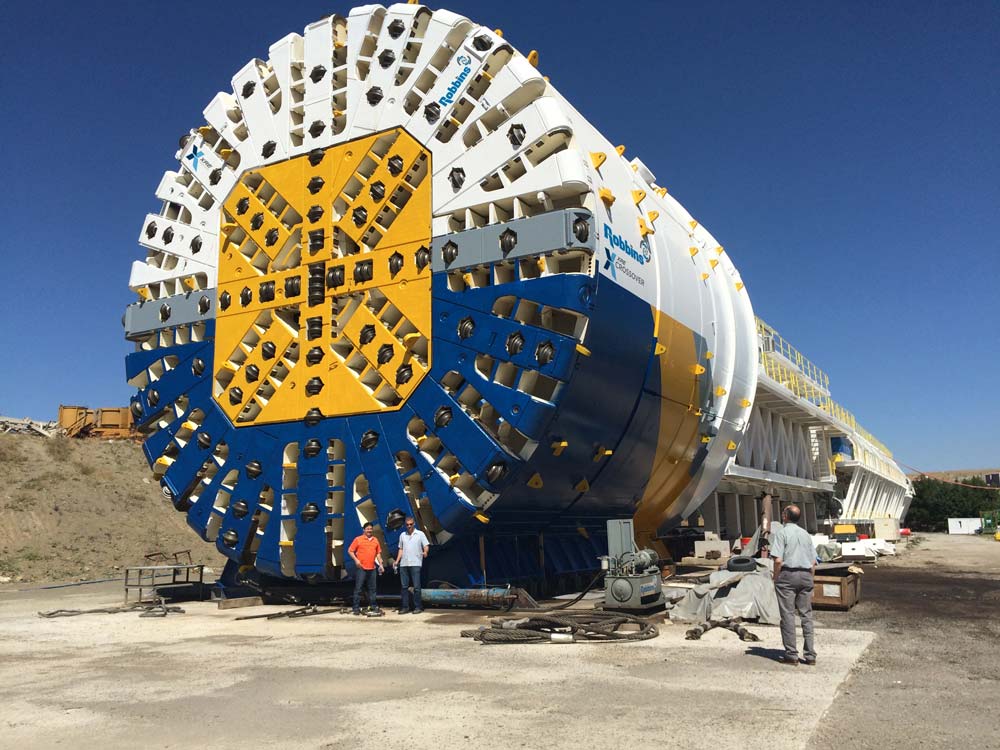
Ideal in Unstable Ground
The XRE’s unique design features make it a strong choice for mixed face rock and non-self-supporting ground. A single direction cutterhead cuts down on tool and machine wear and eliminates the problem of regrind, which causes undue wear on machine elements. Two-speed gearboxes efficiently use power to generate high torque at low RPM, allowing the XRE to get through squeezing geology and fracture zones that might leave other machines stuck.
Adaptable Design
The XRE is a versatile machine that can be customized in a number of ways. Design features often include mixed ground cutterheads with a combination of disc cutters and carbide bits. These machines may offer conversion between a fully pressurized EPB mode and non-pressurized EPB mode, as well as a non-pressurized shielded hard rock mode. Typically conversion is done by changing out the system of muck removal or by using a specialized muck removal system. Muck removal conversions may involve using a robust screw conveyor that can excavate rock, switching from screw to belt conveyor in the tunnel, or converting between an open/closed center-mounted screw conveyor.
At diameters over 12 m, the XRE design becomes even more versatile. Large XRE TBMs can be designed without compromising one machine type over the other. Current setups allow the belt conveyor to remain in place along with the screw conveyor, eliminating the conversion step between screw and belt. Instead, a hydraulic muck ring moves the conveyor into place if hard rock is encountered.
“The performance of the XRE machine has been very good given the geology we have encountered during the project. We do plan to use Robbins for upcoming projects.” — Andrés Alanís, CEO of RECSA group, contractor for TEP II
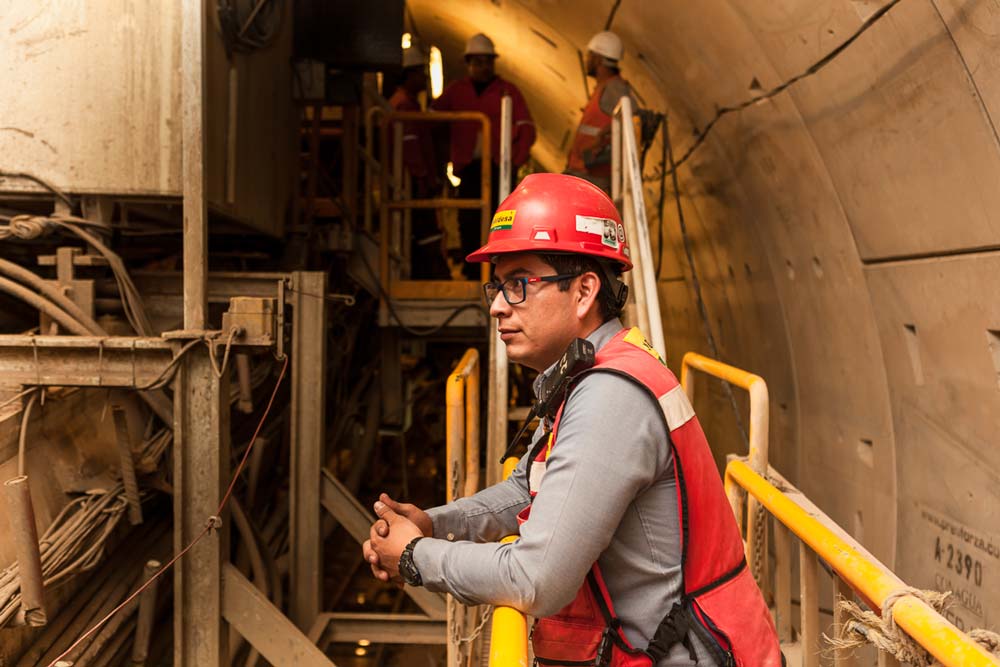
Proven in the Field
In urban environments with mixed ground conditions, settlement is not an option, and must be kept as close to zero as possible. The XSE TBM—standing for a Crossover (X) between Slurry (S) and EPB (E), fits the bill in many cases. In variable ground the XSE combines the best aspects of both proven TBM designs, making for an incredibly versatile solution. Download a specification sheet here.
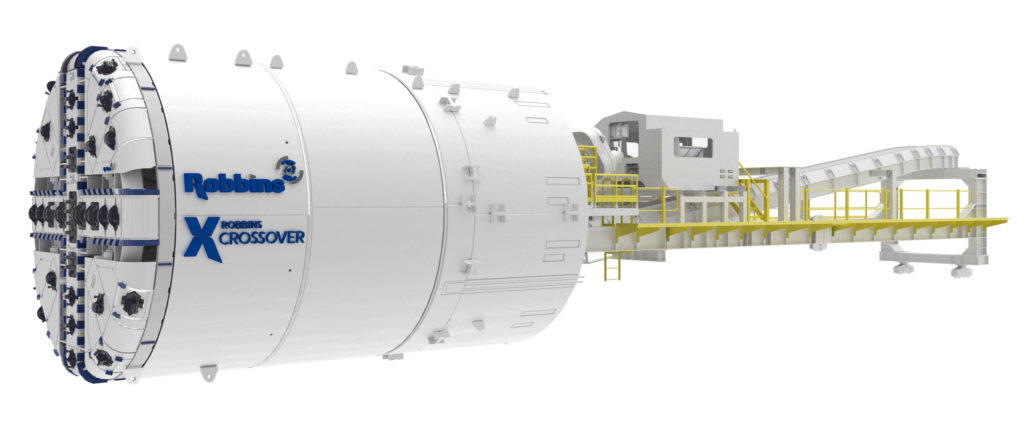
In EPB Mode
In low permeability soils without high hydrostatic pressures, the XSE can advance quickly and efficiently in EPB mode without the expense and complication of slurry-based muck handling. While in EPB mode, any slurry treatment plant on site can be simplified and more economical. In EPB mode the machine utilizes a screw conveyor to maintain face pressure and remove muck. Because there is no slurry at the excavation face, pressure control is safer and any over-excavation is immediately apparent.
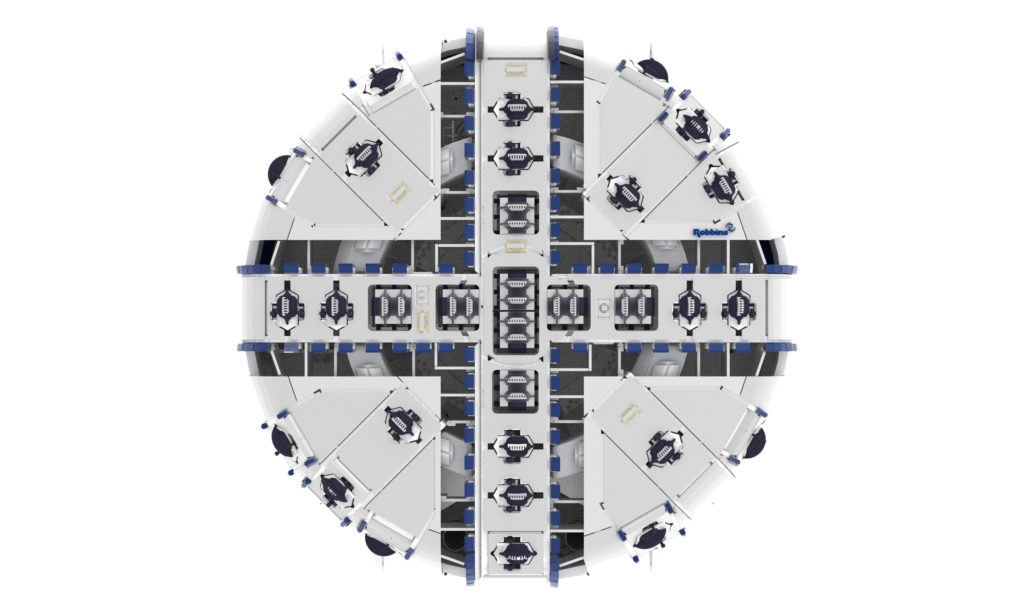
Did you know: The Crossover XSE is the most versatile type of TBM? It can be fully customized with both EPB and Slurry TBM features to excavate in nearly all ground conditions.
In Slurry Mode
In high permeability soils and areas with high hydrostatic pressures, the XSE can run in slurry mode, thereby eliminating the problems of inaccurate volume monitoring and pressure control that EPBs encounter in these conditions. In slurry mode muck empties into a completely enclosed slurry box. Boulders are broken up using a crushing mechanism in the box, while small cobbles are capable of passing through the slurry pipes.
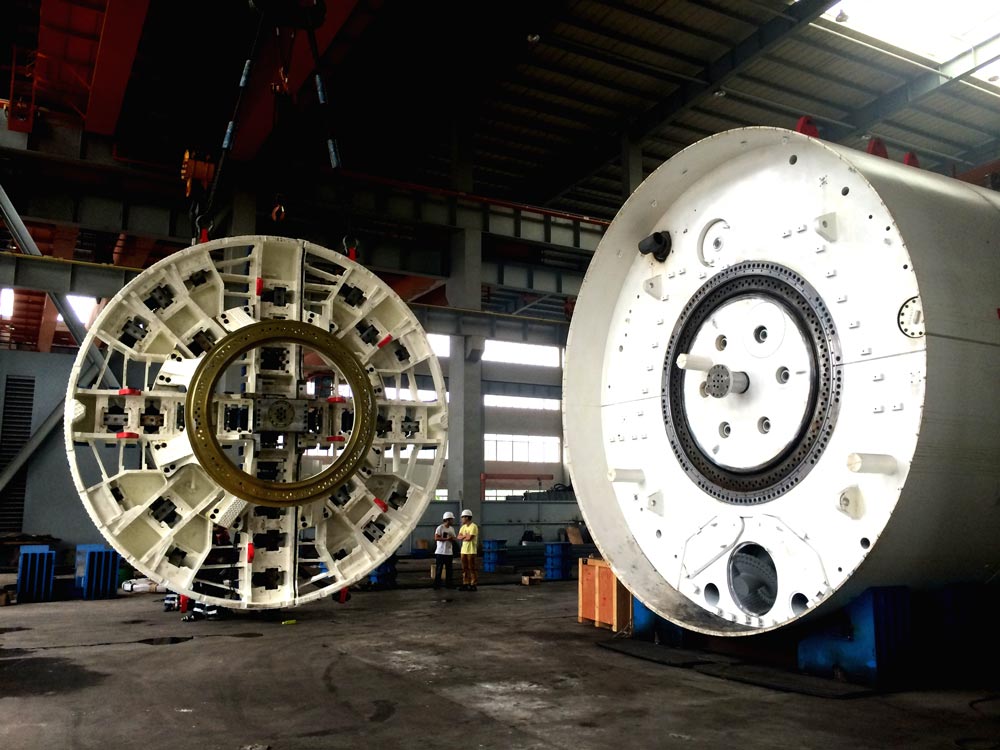

 Close
Close